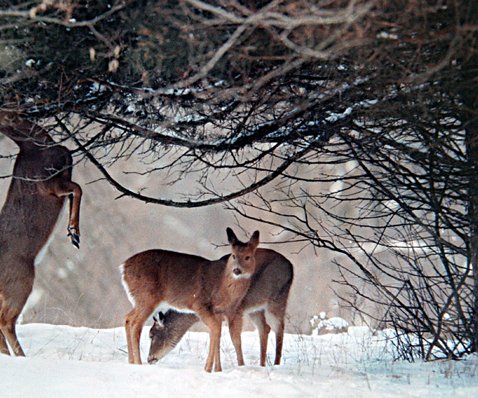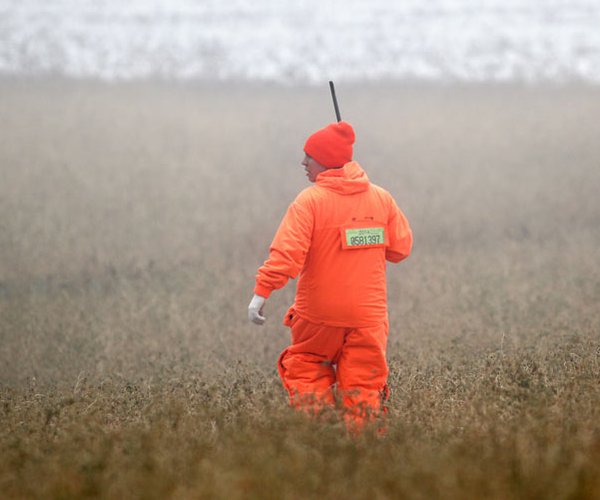Wild ginseng gathering season needs to be about more than putting a screwdriver in the soil to carefully extract a root.
Farmers, and other landowners, should become knowledgeable about this perennial herb (many already are), decide the plant’s importance to the land, and consider some conservation methods to keep a healthy, perpetuating population.
If, after becoming educated regarding this herb it means little in aesthetic or future economic values, ignore its presence and allow any Tom, Dick or Helen to come, dig, and sell what belongs to the landowner.
Wild Ginseng, Wisconsin’s state herb, has a valuable, much-forked taproot that can be harvested during an autumn season. The harvesting is highly regulated, requiring a harvester’s (digger’s) license, only taking plants with at least three compound leaves, and a fruit stalk where berries are still present or were produced.
Permission from a landowner is required. Harvesting on state property, state parks and wildlife areas is forbidden. In 2023, 440 residents and 23 non-residents purchased a harvester’s licenses costing $15.75 and $30.75, respectively.
Don Martin, at Martin’s in Monroe, said he sells one or two harvester’s license each fall to Green County residents.
Will Hsu, at Hsu’s Ginseng Enterprises. Inc. in Marathon County, said he purchased wild, dried wild root for about $800 a pound last year. Green root is also purchased; fresh root dries down about 75 percent so the price before drying is usually about 25 percent of what dried root brings.
With all of those limitations, the ginseng season is and should be more about recognizing the plants, admiring its beauty, planting the seeds, two per fruit, and then leaving this perennial herb grow another year or decade before digging it.
If Panax quinquefolium is in a woods, protect this valuable resource. Pick the red berries that remain on the plant, squeeze them and put the skin, flesh and seed or seeds a half inch below the leaf litter and compress the soil.
In a few instances it may of interest to mark the area and see if the seeds germinate, which could take up to two years. Harvesting the root, which will destroy the plant, should not be attempted for at least ten years after planting, but photographing or otherwise documenting growth changes may be exciting.
Ginseng’s red berries are ripening now, some falling from plants that are 1-2 feet tall.
Fruits on oak, hickories, dogwoods, grape, woodbine, chestnut, elderberry, butternut, walnut, corn, plum, apple, and crabapple are all ripe or beginning to ripen. While many plants are putting on a great crop, oak trees seem to be headed for a depressingly poor year, both red and white species.
White pine produces cones, not fruit, but these trees also seem to have few second year seed cones, which would normally drop seeds this autumn.
Bret Schultz, a trout fishing sage in Black Earth, is looking to finish the 2024 season, ending October 15, as he waits for his recent order of fly-tying supplies to arrive.
“I’m looking forward to the last two months of the season,” he said. “Streams in Richland County and surrounding areas are full of fish and have been and should continue to provide fantastic fishing.
Black Earth Creek is really tough, compared to steams farther north. I love some of those streams that are still pastured and I can fish with the cows, which brings back memories of earlier days.”
Double dipping, to Schultz, is fishing a morning in Dane County and heading to Richland County in the afternoon. He never takes a trout home.
Getting a fix on furbearer trapping for Wayne Smith, of Lafayette County, is not as easy as scouting for turkeys or deer.
“It could be a case of putting together what conditions were last year, judging whether ‘rats’ might have a late litter, and scouting during the two days when it’s allowed on federal land before the auction to buy a designated trapping area on a refuge,” Schultz said.
Doug Williams, D W Sports Center in Portage, reminds anglers that fishing is good and improving with some large muskies being netted along with some accidental catches and releases of catfish, paddlefish and sturgeon.
The water levels in the Wisconsin River should make the September hook and line season much better than recent past years.
Hunting supplies should be good this fall but not all the old brands are available.
“Pick it up if you see it,” Williams said. “If it’s a 30-06 caliber, no problem.”
Small falls of all sorts are beginning to show. Red mushrooms, dropped leaflets from woodbine, walnut and aspen as they will be in October. A few wild flowers bring a sharp contrast with greens, yellows, purples, and blues. Some wild apple trees certainly have a pie or two in the offing, but only if deer don’t get them first.
— Jerry Davis is an Argyle native and a freelance writer who lives in Barneveld. He can be reached at
sivadjam@mhtc.net or at
608-924-1112.





